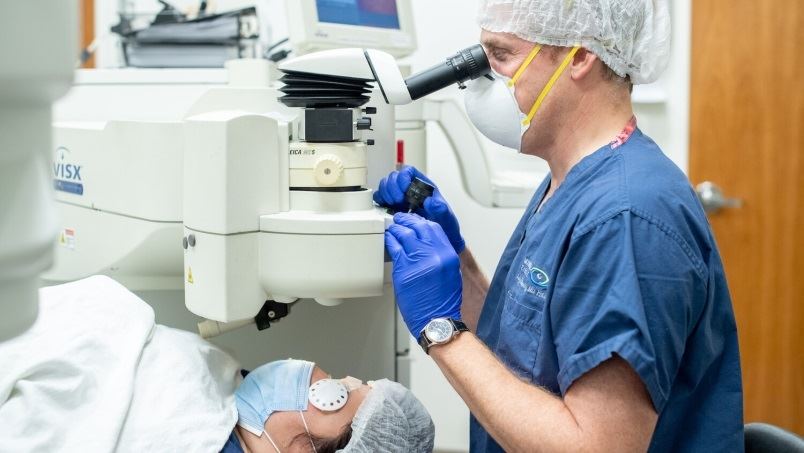Many people decide to get laser eye surgery when they are tired of wearing contact lenses and glasses. They don’t have to worry about making allowances under helmets or experiencing discomfort when swimming and partaking in adventure sports.
However, it’s easy to become overwhelmed when you start looking at your laser eye surgery options. There are so many different laser surgery types available, and not all will suit your needs.
Fortunately, your eye care specialist can walk you through the best options. Still, we’ve included the most common surgery types available in today’s market.
Laser Assisted In-Situ Keratomileusis (LASIK)
Out of all laser eye surgery options, LASIK or laser assisted in-situ keratomileusis would have to be one of the most popular. It’s fast, offers the quickest recovery times, and is also one of the most comfortable options for patients.
This type of eye surgery involves two lasers to reshape the cornea rather than blades. It’s also one of the most preferred options for conditions like presbyopia, astigmatism, hyperopia, and myopia.
When your appointment time rolls around, you will experience laser treatment for just a few seconds on each eye, and you will be able to drive and do most daily activities within 24 hours. It may offer you much-needed peace of mind to know that LASIK is FDA-approved.
Laser Assisted Sub-Epithelial Keratomileusis (LASEK)
Not to be confused with LASIK, LASEK is similar but not quite the same. It can come with a longer recovery period than LASIK and tends to be slightly more uncomfortable. LASEK also doesn’t have FDA approval.
Photo Refractive Keratectomy (PRK)
PRK has mostly been replaced by LASIK, but it used to be the most common laser eye surgery option before LASIK came along. It’s a blade-free treatment option that can assist with astigmatism and myopia.
Even though LASIK is now the most preferred option, some people are still better suited to PRK if they have thin corneas. It doesn’t tend to be suitable for people with moderate to high long-sightedness.
Advanced Surface Ablation (ASA)
ASA is a form of PRK laser eye surgery, which has FDA approval dating back to 1995. The ASA technique is very similar to PRK, but it uses a different program to shape the cornea.
Laser Blended Vision (LBV)
If you have presbyopia, the loss of ability to focus on nearby objects, your eye specialist might recommend laser blended vision, LBV. It’s typically only recommended for people over the age of 45 for distance and reading vision. It uses a combination of PRK and LASIK techniques.
Small Incision Lenticule Extraction (SMILE)
Out of all laser eye surgery techniques now being offered, SMILE would have to be one of the newest ones. It’s a blade-free treatment option with a single femtosecond laser. This laser creates discs of tissue in the shape of lenses within your cornea.
During this procedure, eye surgeons also remove your lenticule through a small incision through the cornea. By removing the lenticule, the cornea is reshaped and flattened to correct vision. It’s not FDA approved for long-sightedness, myopia, or astigmatism, and it has a slower healing process than LASIK.
These are just a few of the many laser eye surgery options available. If you believe you could benefit from any of these surgery types, see your optometrist for advice. They can help you choose the most suitable choice for your unique situation.

